Normally I do not want to be that guy that starts to line up all the problems – I like to stay positive and try to find solutions. However, in this article, I will go against my principles.
So what’s the problem?
There is not only one problem but two 🙂
For people who love to do bodyweight exercises, there is a problem when it comes to leg strength.
As we are bodyweight athletes, we can’t just place a barbell on our shoulders and start to do weighted squats – even though they are damn efficient and I absolutely think you should do them. Therefore we need to find another way to strengthen our legs.
The answer to that is pistol squats.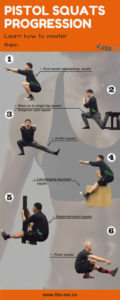
Single leg squats, as some also like to call them, are carried out exactly as the name indicates. We squat down on one leg only and thereby put a lot more weight on the legs than when we do a normal squat. The result is that leg has to work much harder and therefore will start to develop more strength.
Great, so it seems like we solved the first problem, but I promised you two problems:-)
Second problem
Pistol squats are difficult. Quite difficult actually. It took me six months to be able to do them.
The problem with the pistol squats is not only that you need to be able to hold your complete body weight on one leg but also that you have to stabilize and balance a one-legged movement. To be honest, that is where the biggest challenges are.
Tired of all the problems?
Ok, let’s change perspective and try to see how we can solve the issues. Let me try to walk you through a squat pistol progression template that can help you to master them.
But before we do that, let’s just briefly get an understanding of why we want to have strong legs and why pistol squats will give you that and much more.
Benefits with strong legs
Maybe this is a no-brainer but let’s just repeat then.
-
An average American walks 5000-7000 steps a day. Even though more steps would be better, it’s still a lot of steps during a lifetime. Our legs are what makes us mobile (No it’s not your car) and we, therefore, want them to work as well as possible for as long as possible.
-
Weak legs will often mean that our musculoskeletal system won’t work optimally. Other and often smaller muscles will have to compensate for this problem, which will cause other issues.
-
The muscles in our legs are some of the biggest muscles we have. Big and strong muscles have a big impact on our basal metabolic rate (BMR), which again can help us to keep the weight.
-
Finally, it seems that strong legs help to keep your mind “young”.
Benefits of mastering pistol squats
Pistol squats will give you the same benefits as above and even more.
The reason why they are so difficult is because they are what we call asymmetrical exercise. Meaning all load has to be handled on one site – in this case, one leg.
As I indicated earlier, the biggest challenge is not to hold the load as such, but when we only have one site working, the body needs to stabilize in a completely different way and therefore engage muscles differently as well.
Especially our core needs to work a lot when we do asymmetric exercises. The core is the bridge between our upper and lower body and therefore in charge of stabilizing.
When we master pistol squats, we are able to efficiently engage these stabilization muscles which will make us stronger in different kind of movements. In a nutshell, you can say that you gain more control of your body.
How to master pistol squats
We have to attack the progression from different angles.
First, we need to make sure that you have sufficient strength and range of motion to actually do a pistol squat. Then we need to work on the balance and stabilization part.
The good thing is that you don’t need to think about all that – just follow below progression template.
Foundation
The squat
We need to be able to squat probably before we start to think about doing pistols squat.
Here is what we are looking for:
-
Be able to squat with full range of motion and proper form
-
Hip goes lower than knees and as close to the ground as possible
-
Chest stays high and doesn’t fall forward
-
The whole food should be on the ground
-
Knees are pressed outward
-
With proper form, we should be able to do 20 squats before we move forward.
One leg strength
-
When we master the squats, we can start to focus on one leg strength.
-
Everything we developed in the normal squat we should bring to the one-legged versions.
-
The goal of these exercises is to build more strength and at the same time get a feeling for the balance and stabilization
.
Bulgarian split squat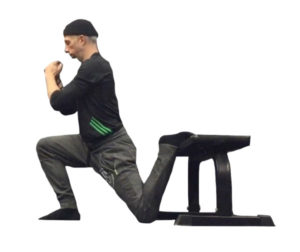
-
Bend one leg and place it behind you on an elevated surface like a bench or a chair.
-
Squat down on one leg
-
Keep same key points as in the normal squat
Archer squat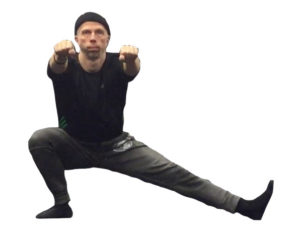
Actually, archer squat might be easier to start with than the Bulgarian split squats. The reason for that is, it’s less challenging when it comes to balance.
-
Take a wide stand like a sumo wrestler
-
Squat down on one leg by moving your body to the site and down.
-
The other leg is extended
-
Same key points as with normal squat
We want to continue with the one legged squats until we have a good feeling about them.
Again being able to do 20 on each leg with a good and steady form is a great benchmark.
Low hanging leg pistol squats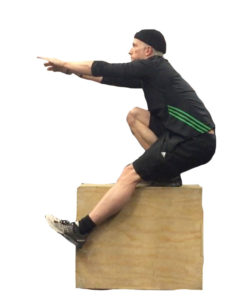
As we now have built up some strength and also a feeling for how to balance on one leg we should try it without support.
This exercise will have you doing a one legged squat with your full bodyweight, but as the leg doesn’t have to be extended in front of you, it will be easier than a real pistol squat.
-
Step up on a stable high surface where one leg can hang freely without touching the ground when squatting down.
-
Now simply squat down as described in the normal squat
This will for sure be tough for you. Aim for a few reps like 5 on each leg. When you feel comfortable with that, it’s time to move on.
Supported pistol squats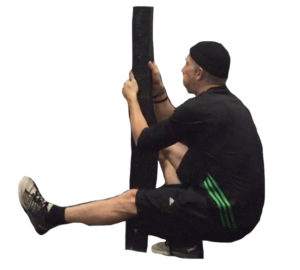
Now it’s time to get close to the real deal. We want to do the actual movement but with some support.
Now you will have to do the pistol squat with real form, meaning one leg extended in front of you and this will challenge the balance.
-
Stand close to something you can hold on to and at the same time be able to extend your leg in front of you when squatting down.
-
Now simply squat down while you walk your hands down as well.
-
Return to a standing position.
The trick is to use the hands less and less. Keep a range of 5-10 reps on each leg and do it for 3-5 rounds. Make sure to rest one day between the workouts. The point is, take your time as strength training isn’t accomplished overnight.
Pistol squats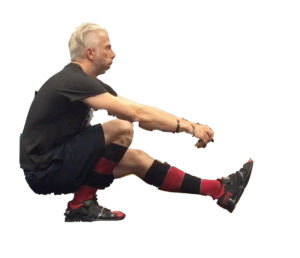
When you feel that you are using your hands very little, it’s time to try the real deal.
Here are some tips and tricks:
-
Extend your arms in front of you during the complete movement as this might help you keep the balance
-
Elevate your heel a bit by putting something below it, like a book. This will make your quadriceps (front leg) work more than your glutes (butt) and often we are stronger in quadriceps than in glutes.
To get a strong hold in the bottom position, it might be a good idea to do some isometric training as well.
Just go down in the squat pistol and hold that position for as long as possible.
Progression & final thoughts
-
Don’t start to play with pistol squats before you master regular squats effortless. Lack of strength and range of motion will put a lot of undesirable stress on other joints and muscles. Which again can lead to injuries.
-
Be patient and follow the progression template – if you want an easy progression template for 12 weeks then try it here.


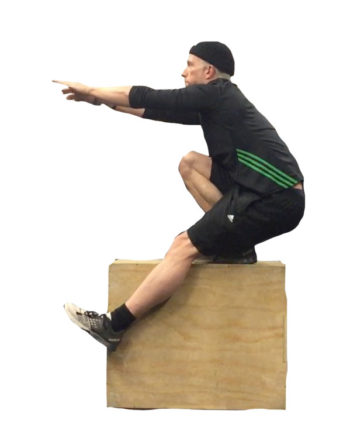
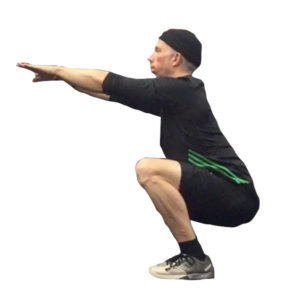
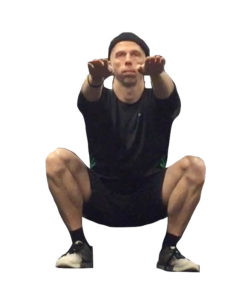
One thought on “Pistol squats progression”
Howdy! I just want to offer you a huge thumbs up for the excellent info you have right here on this post. I will be returning to your site for more soon.